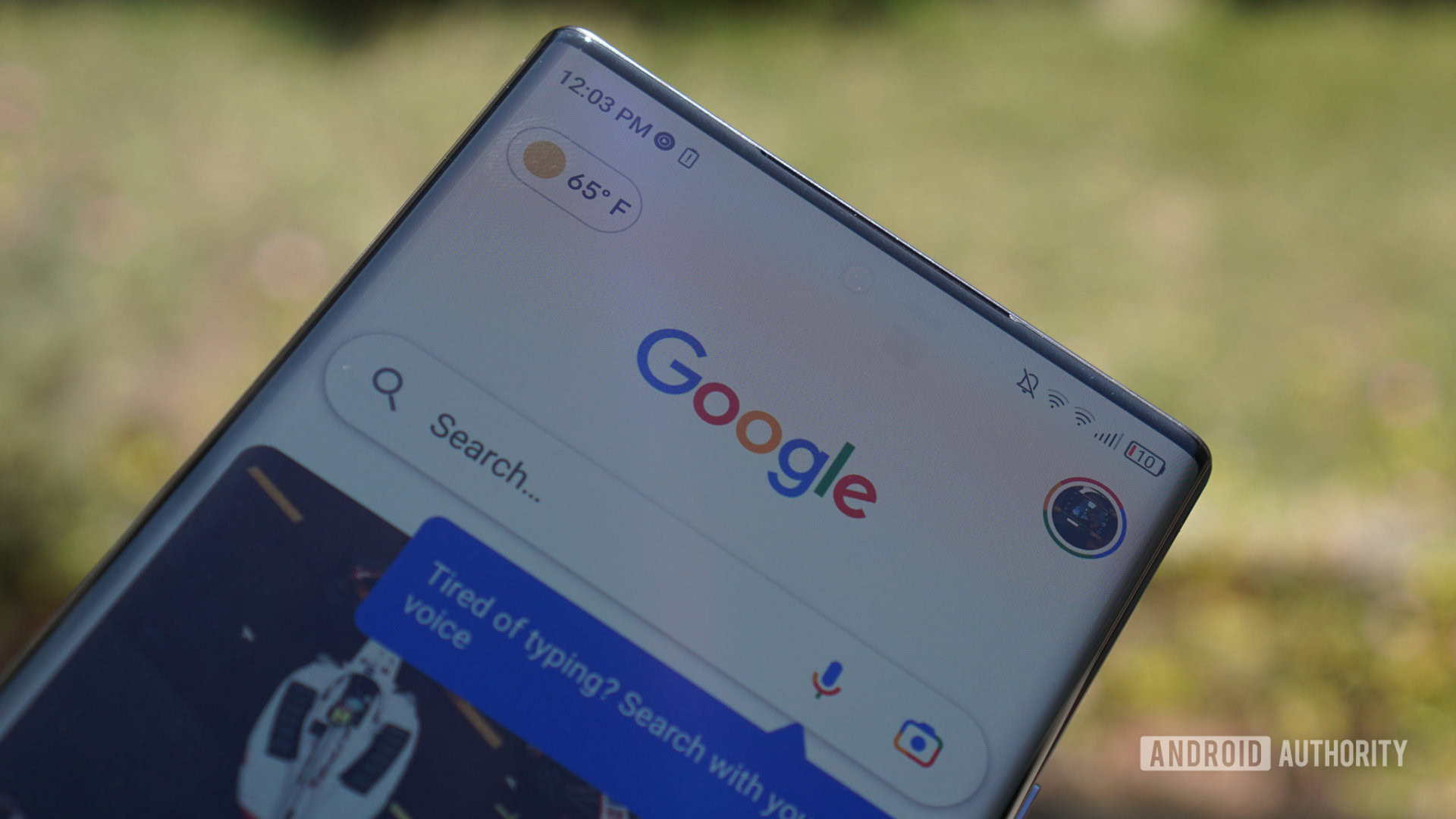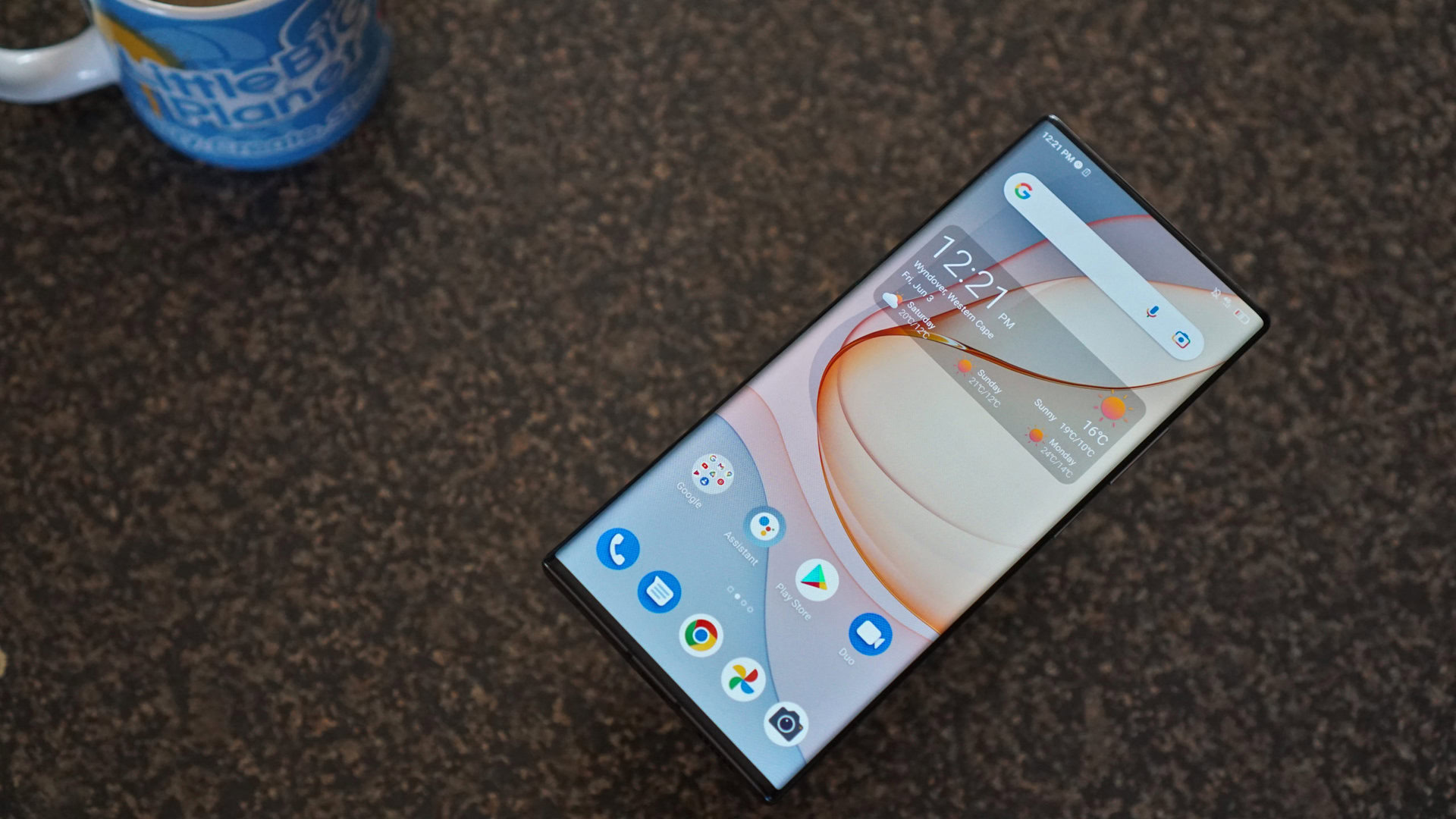Affiliate links on Android Authority may earn us a commission. Learn more.
Even the best under-display cameras are garbage, here's the proof
Published onAugust 15, 2022

ZTE was the first major brand to release a smartphone with an under-display selfie camera with the Axon 20 5G back in 2020. We thought results from this first-generation effort left a lot to be desired, but the company has stuck with the tech nonetheless. Other brands have joined in with similar results: We didn’t think much of Samsung Galaxy Z Fold 3’s under-display camera, and we doubt the Galaxy Z Fold 4‘s is any better.
ZTE is now on its third generation of under-display selfie cameras with the Axon 40 Ultra, which was released globally a few months ago. Even so, we slated the selfie camera’s image quality once again — it’s clearly inferior to conventional selfie cameras on flagship smartphones. This disparity isn’t a surprise as the very technology that enables under-display selfie cameras introduces all sorts of issues.
Our verdict: ZTE Axon 40 Ultra review — Hiding in plain sight
The camera essentially peeks through the tiny gaps between a screen’s pixels to take a picture, and those pixels block a lot of light from reaching the sensor. The fact that there’s a display above the camera also introduces issues related to lens flares and refraction. It’s no wonder that image quality isn’t up to par.
The nature of under-display selfie cameras means they can't compete with the best, but what about budget phones?
So the Axon 40 Ultra’s selfie sensor can’t take the fight to other flagships, but is it comparable to selfie cameras on budget phones at the very least? Well, I decided to do a little experiment pitting the selfie sensors of these three phones:
What do you think of under-display selfie cameras?
Daylight scenes
The easiest test for any selfie camera is a simple shot in daylight. And at a first glance, the ZTE phone offers a slightly more saturated image with relatively low levels of noise. However, both the OPPO and POCO phones offer more accurate colors and more resolvable detail. In saying so, the OPPO sample shows quite a bit of noise in the sky compared to the under-display camera. Keep in mind it’s a four-year-old budget phone, though.
Daylight scenes are fine in general, but lack a lot of detail when you zoom in.
Check out the image comparison below for a closer look at the detail in both images. The much cheaper POCO F4 clearly produces superior results than the flagship Axon.
Backlit scenes
Backlit scenes were a tough challenge for conventional selfie cameras in the early days, but today’s devices usually do a pretty decent job of exposing your face. Whether that’s through simply exposing your face at the expense of the background or HDR/multi-frame techniques, modern selfie cameras tend to cope okay.
As such, the Axon 40 Ultra didn’t fare too badly in this scenario, doing a better job of exposing the background than our competitors. In fact, you can make out some blue sky and clouds here, while the POCO shot only shows clouds, and the older OPPO A3 shot is blown out completely. However, the ZTE’s background exposure comes at the expense of my face and plenty of lens flare around my head.
The ZTE's decent background exposure comes at the expense of my face.
The Axon 40 Ultra shot seen above is one of the better backlit samples we took with the phone, as we’ve also seen issues with unreliable exposure at times and weird light flare patterns. But more on the latter in a bit.
Low-light scenes
Due to the display blocking some light, the biggest challenge for under-display selfie cameras is in low-light situations. You only need to look at the sample shots above to see the huge disparity between budget-tier conventional cameras and an under-display shooter. These shots were taken in a car parked in the garage during the day, so it wasn’t complete darkness. But the Axon 40 Ultra camera delivered an image that was simply unusable.
Under-display cameras really struggle with low light.
Neither the POCO nor OPPO shots are perfect, though. The OPPO snap shows way more noise than the already noisy POCO image, while the POCO image also delivered very inaccurate skin tones. But these shots are still brighter and have way more detail than the Axon 40 Ultra camera, and would work in a pinch for social platforms or when messaging a friend or family member.
Explainer: Want a phone with a great camera? Here’s what to look for
Extreme low light
What about extremely dark conditions though? Well, most selfie cameras offer unusable images in these conditions, unless night mode is supported on the front too. Unfortunately, the Axon 40 Ultra lacks a night mode for selfies, so we’ve just got standard comparisons here.
Without a proper night mode, most selfie sensors struggle in extreme darkness. But under-display sensors are still worse than the rest.
The results are extremely dark and unusable for each phone, but it’s still clear that the under-display selfie camera was the worst performer of the lot nonetheless. We can still make out buildings in the OPPO and POCO shots. The POCO shot is better though, as we’d expect, as we can easily tell the difference between the building’s roof and the sky and we can just about discern a few letters on the T-shirt.
Light sources and under-display cameras
It’s pretty clear that the Axon 40 Ultra’s under-display selfie camera is inferior to our current and old budget smartphone cameras for the most part. But that’s not the end of it. Things start to get a little bizarre with the under-display camera when there’s a source of strong light at the side of a scene. Check out the gallery below.
Light flares aren’t uncommon on smartphone cameras when the sun is in the scene or nearby, as the POCO F4 shows above. But the Axon 40 Ultra consistently featured these odd red and blue patterns at the top of the image when we snapped this scene. You can even make out some sort of ghost-like reflection of the window on the wall to the left of my head, and we were able to reproduce this in subsequent shots. Otherwise, the ZTE camera delivers inaccurate colors (likely due to incorrect white balance) and a less-detailed image compared to even the 2018-era budget OPPO phone.
The display interferes with the camera underneath in more ways than just blocking light.
We also saw artifacts occasionally pop up in a few other situations, such as light sources sometimes taking on a grid-like appearance at night or a mesh-like light flare during the day. We noticed this during our review period (see the first snap below) and in select shots we snapped since then. All of these patterns and artifacts are presumably due to the strong light in the scene hitting the display area above the camera sensor.
Under-display cameras are still under-baked

It’s fair to say that under-display selfie cameras aren’t going to reach the level of the best selfie cameras on the market anytime soon. But it’s reasonable to want something that comes close to older budget phones at the very least. Three generations later, and it’s clear ZTE’s solution doesn’t even reach this mark.
The Axon 40 Ultra’s selfie camera is still one of the better under-display solutions on the market, so these results say a lot about the technology as a whole. Manufacturers have to balance the quality of the sensor’s results and the visible haziness of the display area above the camera. Minimize the latter and you hurt the former, and this compromise isn’t likely to go away.
We hope to see major image quality improvements in 2023, but we’re not optimistic about it. Our next look at the technology should come with our test of the upcoming Samsung Galaxy Z Fold 4, so we’ll let you know how that fares. (Spoiler: Our initial tests say it’s bad.)
Up next: Forget in-display, this is the golden age of side-mounted fingerprint scanners